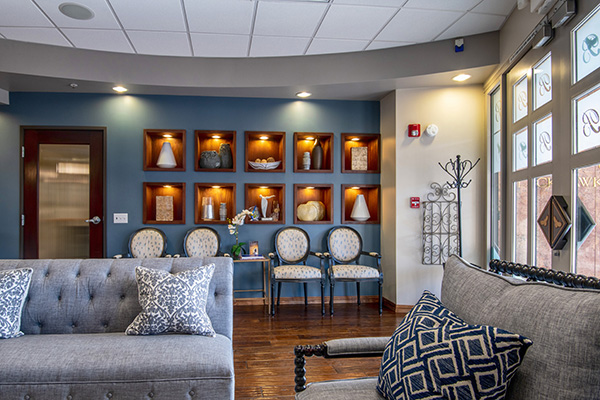
Checking Out Ethnic Variety in Nose Job Techniques
Introduction
Rhinoplasty, frequently described as a "nose job," has emerged as among the most popular cosmetic procedures globally. The quest for an aesthetically pleasing nose is not merely about altering its shape or size; it incorporates cultural subtleties that considerably affect the nose job procedure. As societies become increasingly multicultural, comprehending the impact of ethnic diversity on rhinoplasty methods is critical for both practitioners and patients. This post looks into the intricacies and distinctions fundamental in ethnic nose job, highlighting how different backgrounds add to unique surgical approaches.
Understanding Nose job: A Quick Overview
What is Rhinoplasty?
Rhinoplasty is a surgical procedure aimed at customizing the shape or function of the nose. Whether carried out for cosmetic functions or to improve breathing difficulties, this surgery can substantially improve a person's facial harmony and self-esteem.
Types of Rhinoplasty Procedures
- This strategy includes making an incision on the columella (the tissue between the nostrils) enabling greater exposure and access to nasal structures.
- In this approach, all cuts are made inside the nostrils, leaving no visible scarring. It's typically less intrusive and can provide a quicker healing time.
- This treatment addresses complications or unacceptable results from a previous rhinoplasty surgery.
Why Consider Rhinoplasty?
- Improved aesthetics
- Enhanced self-confidence
- Correction of structural defects
- Better breathing functionality
The Significance of Ethnic Diversity in Nose Job Techniques
Cultural Influences on Nasal Aesthetics
Ethnic background plays an essential role in determining what makes up an "ideal" nose shape, size, and profile within varied cultures. For instance:
- Caucasian Patients: Often choose a straighter nasal bridge with a refined tip.
- Asian Patients: May seek enhancement to produce a more prominent bridge.
- African American Patients: Generally desire enhancements while maintaining their distinct characteristics.
Understanding these cultural choices permits cosmetic surgeons to provide customized care customized to each patient's unique heritage.
Facial Features Across Different Ethnicities
Different ethnic groups display unique facial features that influence nose job strategies:
|Ethnic background|Typical Nasal Attributes|Desired Changes|| --------------------|---------------------------------------|----------------------------------------------|| Caucasian|High nasal bridge|Refinement and correcting the alignment of|| Asian|Low nasal bridge|Augmentation for higher bridge|| African American|Wider base with thicker skin|Narrowing and improvement without losing identity|
Ethnic Variety in Surgical Techniques
Surgeons should adjust their method based on private ethnic traits:
Rhinoplasty Surgical treatment Procedure Explained
Pre-Surgery Consultation
Before going through nose job surgical treatment, patients meet with their surgeon for an extensive consultation involving:
- Discussion of aesthetic goals
- Examination of nasal structure
- Review of medical history
Surgical Procedure Timeline
Step 1: Anesthesia
Patients may undergo either regional or general anesthesia depending upon the intricacy of the surgery.
Step 2: Incision
The selected method (open or closed) identifies where incisions are made.
Step 3: Reshaping the Nose
Surgeons control bone and cartilage to accomplish preferred shape changes.
Step 4: Closing Incisions
Once improving is complete, cuts are closed utilizing sutures.
Step 5: Healing Phase
Patients will experience swelling and bruising post-surgery however will start to see results as healing advances over weeks/months.
Rhinoplasty Expense Factors
The cost of rhinoplasty differs commonly based upon numerous aspects:
On average, clients can anticipate nose surgery expenses varying from $5,000 to $15,000 depending upon these variables.
Exploring Ethnic Diversity in Nose Surgery Techniques Across Cultures
Asian Nose job Techniques
Cultural Significance
For lots of Asian clients, accomplishing balance in between facial functions while boosting their cultural identity is paramount when thinking about rhinoplasty.

Surgical Approach
Surgeons frequently concentrate on:
- Bridge enhancement utilizing silicone implants or cartilage grafts.
- Tip improvement methods that keep ethnic characteristics.
African American Nose job Techniques
Emphasizing Heritage
Patients often look for changes that enhance their beauty without compromising their cultural identity-- this consists of protecting broader noses or fuller pointers while boosting general appearance.
Surgical Modifications
Techniques frequently employed consist of:
- Utilizing cartilage grafts from other parts of the body for idea refinement.
- Adjustments that result in natural-looking profiles without extreme narrowing.
Hispanic/ Latino Nose surgery Considerations
Unique Facial Structures
Hispanic clients may have differed nasal features affected by many backgrounds consisting of Native roots which require personalized techniques throughout surgery.
Customized Techniques
Focus locations consist of:
- Enhancing forecast if needed while keeping natural characteristics.
- Appropriate adjustments to ensure harmony throughout facial features.
Post-Rhinoplasty Care Tips for Various Ethnic Groups
General Postoperative Instructions
Regardless of ethnicity, patients are recommended to follow these standards:
Specific Suggestions by Ethnicity
For Asian Clients:
Due to possibly thinner skin, cautious tracking of healing is crucial to avoid problems like scarring or color changes at cut sites.
For African American Clients:
Consideration must be given towards possible keloid formation; hence, follow-up care may include topical treatments suggested by surgeons.
FAQs About Checking out Ethnic Diversity in Nose Surgery Techniques
1. What is nose surgery's main purpose?
Rhinoplasty's main objective is either aesthetic enhancement or practical enhancement related to breathing troubles through adjustments of surgery preparation tips nose shape or size.
2. How does ethnic culture impact rhinoplastic outcomes?
Ethnicity influences aesthetic preferences and physiological differences which direct individualized surgical methods for optimal results appreciating cultural values.
3. Exists a significant cost difference based on ethnicity?
While expenses mostly originate from procedural complexity rather than ethnicity alone, particular ethnic considerations may require specific know-how which might marginally change general costs due to extra methods employed throughout surgery.
4. The length of time does healing typically take after rhinoplasties?
Recovery period varies; however, most clients go back to normal activities within two weeks while complete healing could extend beyond six months depending upon specific circumstances such as surgical intricacy and adherence to postoperative directions offered by surgeons post-operatively.
5. Can I integrate nose surgeries with other procedures?
Yes! Lots of select complementary surgeries such as chin enhancement or facelifts alongside rhinoplasties-- talking about these options completely throughout consultations makes sure holistic treatment planning tailored particularly toward personal goals!
6. Are there risks involved with ethnic-specific modifications?
Like any surgical treatment, dangers exist including infection threat & & discontentment with outcomes; however picking experienced cosmetic surgeons acquainted with diverse populations reduces possibilities & & facilitates effective results aligned with patient expectations!
Conclusion
Exploring ethnic diversity in nose surgery strategies exposes simply how vital it is for cosmetic surgeons today to adapt their practices according not only specific anatomy but also cultural choices surrounding beauty standards-- ensuring satisfaction amongst all communities seeking improvement through this powerful procedure! By fostering understanding; engaging conversations; offering customized options rooted deeply within everyone's unique heritage-- the art and science behind successful outcomes continues progressing positively!